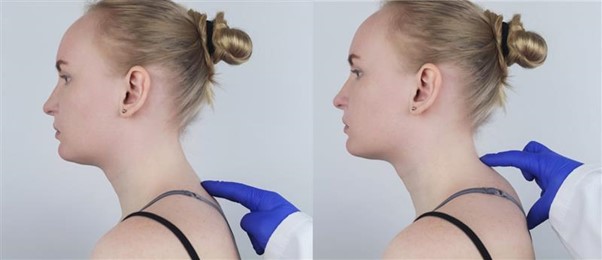A spinal disorder marked by an extreme outward curvature of the spine, resulting in a pronounced arch in the upper back.
Often known as “hunchback,” this condition can occur in people of all ages, though it is most commonly seen in teenagers and the elderly.
Understanding Kyphosis: Types and Prevalence
Kyphosis manifests in several forms, each with distinct characteristics:
- Postural Kyphosis: The most common type, often developing during adolescence due to poor posture and is more frequently observed in individuals assigned female at birth.
- Scheuermann’s Kyphosis: This form occurs due to a structural abnormality where vertebrae develop a wedge shape, more common in individuals assigned male at birth during their teenage years.
- Congenital Kyphosis: Present from birth, this type results from spinal development issues in the womb.
- Cervical Kyphosis: Involves the curvature of the neck spine.
- Hyperkyphosis: A severe form typically affecting adults over 60, characterized by a curvature greater than 50 degrees.
Statistically, while less than 8% of school-aged children in the United States experience Scheuermann’s kyphosis, about 20% to 40% of older adults suffer from hyperkyphosis, emphasizing a significant prevalence in the elderly population.
Symptoms and Diagnosis of Kyphosis
The signs of kyphosis can range from physical alterations to functional impairments:
- Physical Symptoms: Rounded shoulders, a visible curve on the upper back, and tight hamstrings are common. In severe cases, there may be back and shoulder pain, stiffness, and muscle fatigue.
- Functional Symptoms: Advanced kyphosis might lead to breathing difficulties, balance issues, and neurological symptoms such as numbness or tingling in the legs.
Diagnosis typically follows from physical examinations, often initiated during school screenings. For a definitive diagnosis, X-rays help measure spinal curvature, and MRI scans might be employed to identify underlying causes. Pulmonary function tests are also useful if respiratory issues are present.
Effective Treatment Options
The management of kyphosis varies based on the severity and type of the curvature:
- Physical Therapy: Aims to strengthen the back and abdominal muscles, improving posture and flexibility.
- Pain Medication: Anti-inflammatory drugs are prescribed to alleviate discomfort.
- Back Braces: Often recommended for children whose bones are still growing, particularly in cases of Scheuermann’s kyphosis.
- Surgical Interventions: In severe instances, spinal fusion surgery might be necessary to correct the curvature and stabilize the spine.
Treatment plans are tailored to the individual’s age, overall health, type of kyphosis, and the curve’s severity. Regular follow-ups are crucial to monitor the condition and adjust the treatment as necessary.
Prevention and Prognosis
While genetic forms of kyphosis cannot be prevented, postural kyphosis can be managed through lifestyle adjustments focused on maintaining good posture, regular exercise, and a healthy weight. These practices are especially important for young individuals during their growth phases.
The outlook for individuals with kyphosis largely depends on early diagnosis and intervention. Many with this condition live normal, active lives, especially when the curvature is managed effectively through non-surgical means. However, without treatment, kyphosis can progress, leading to significant health issues, including chronic pain and impaired lung function.
When to Consult a Specialist
It is advisable to consult a healthcare provider if you or your child exhibits symptoms of kyphosis or if there are any concerns about spinal health and posture. Early intervention is key to managing the condition effectively.
For those already diagnosed, maintaining regular appointments with your healthcare provider is essential to monitor the condition and adjust treatment plans as needed. If you experience symptoms like difficulty breathing or severe pain, immediate medical attention may be necessary.
Contact Dr. Navaladi’s Knee and Spine Clinic
Dr. Navaladi’s Knee and Spine Clinic offers specialized care for kyphosis, providing expert evaluations and tailored treatment options to manage and potentially correct spinal curvatures. Whether you’re dealing with a recent diagnosis or seeking a second opinion, our team is ready to assist you in achieving the best possible outcome.
Don’t let a curved spine dictate your life! Reach out to Dr. Navaladi’s Knee and Spine Clinic today and discover your path to a straighter, healthier spine.



